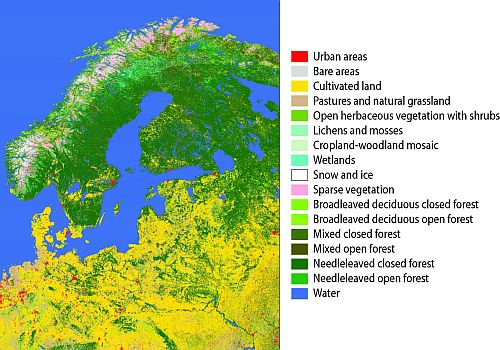| Background > Climate zones and seasonality
The northern part of the Baltic Sea extends into the polar region, with most of the Bothnian Bay and the Gulf of Finland covered with ice during most winters. Most of the southern Baltic Sea basin is characterized by a temperate climate with cool summers and mild winters. This overlaps with a continental climate impact in the east (cold winters, warm summers) and a more marine climate influence towards the west (cool and wet summers, mild winters). Thus, there are quite large regional and seasonal variations.
Land use and vegetation patterns
These climate zones are reflected in land use and vegetation patterns in the Baltic Sea basin. The image shows that there is a pronounced difference in vegetation types between the north and the south of the Baltic Sea basin. The northern part is dominated by mainly needle-leaved forests and barren land (in the very north and montain regions), while in the southern part, cultivated agricultural land is clearly predominating. Click on the image to get a large picture of land use and vegetation patterns of the Baltic Sea basin.

|

